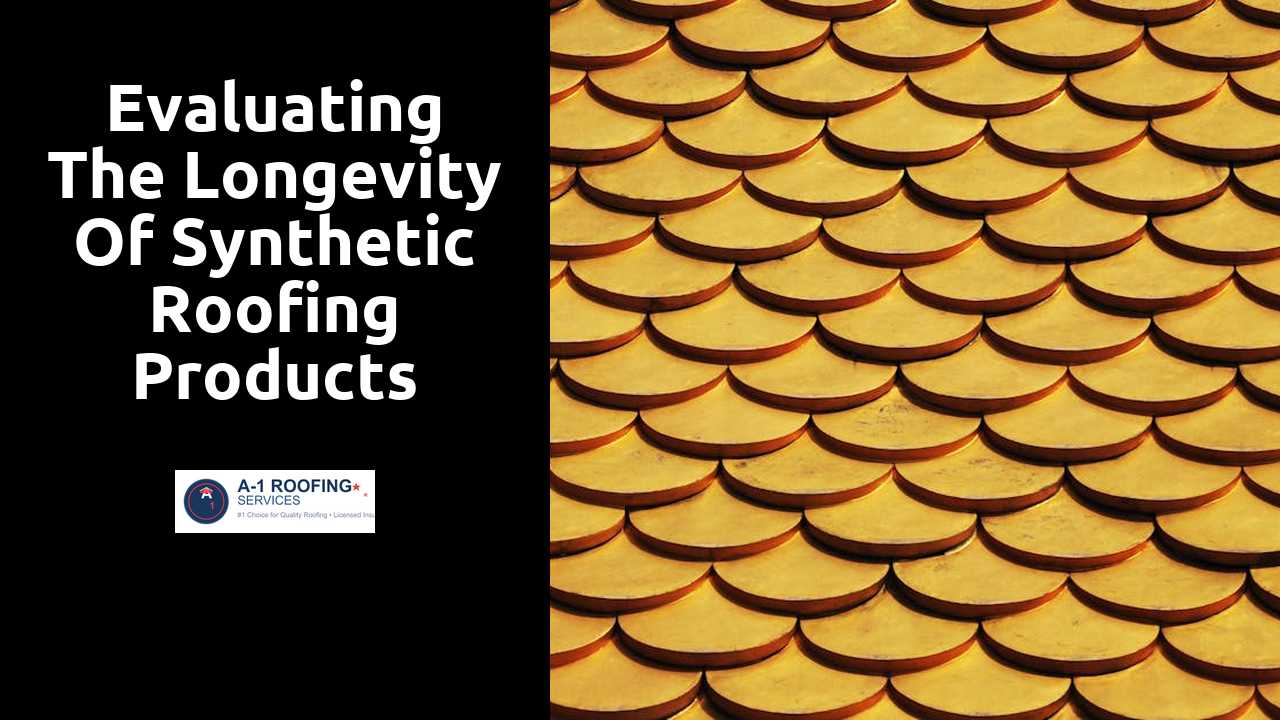
Evaluating the Longevity of Synthetic Roofing Products
Table Of Contents
Cost Considerations Over Time
When considering synthetic roofing products, it is essential to evaluate their cost over time, including installation and maintenance expenses. Upfront costs may seem higher than traditional options, but the durability and low maintenance requirements often lead to significant savings in the long run. Many synthetic materials can withstand harsh weather conditions, reducing the frequency of repairs and replacements. This long-term financial perspective helps homeowners understand the overall value of investing in synthetic alternatives.
In addition to direct costs, energy efficiency plays a crucial role in evaluating financial implications. Synthetic roofing products often come with features that reflect heat, helping to lower cooling costs during warmer months. This energy-saving potential can further offset initial expenditures, contributing to a healthier bottom line. Balancing these factors is vital as property owners assess the total cost of ownership and the benefits provided by synthetic roofing solutions.
Hop over here to discover more.
Evaluating Long-Term Value
When assessing the long-term value of synthetic roofing products, several factors come into play. These products can offer a superior lifespan compared to traditional materials, reducing the frequency of replacements and repairs. This durability often translates to lower maintenance costs, which can significantly contribute to the overall savings for homeowners. Additionally, advancements in manufacturing technology have led to improved performance features, such as UV resistance and enhanced insulation properties, further adding to their appeal.
Another aspect to consider is the energy efficiency of synthetic materials. Many of these products are engineered to help regulate temperatures within the home, potentially lowering energy bills over time. Homeowners can also benefit from the aesthetic versatility that synthetic roofing offers, allowing for a range of styles that complement various architectural designs. Therefore, when evaluating long-term investments, synthetic roofing materials may provide a compelling option that aligns functionality with cost savings.
Climate Adaptability of Synthetic Roofing
Synthetic roofing products are designed to withstand a variety of climatic conditions. Their manufacturing processes often incorporate advanced materials that enhance resistance to extreme temperatures, UV radiation, and moisture. This adaptability allows them to maintain structural integrity and aesthetic appeal over prolonged exposure. Additionally, many synthetic options mimic traditional materials while offering superior performance in diverse weather scenarios.
In regions prone to harsh weather, synthetic roofing can provide significant advantages. These products typically feature lightweight construction, which reduces stress on building structures during heavy snow or strong winds. Furthermore, their resistance to mold, mildew, and insect damage enhances longevity in humid environments. Homeowners may find that investing in synthetic roofing systems leads to reduced maintenance and improved energy efficiency, making them a practical choice for varying climates.
Suitability for Various Weather Patterns
Synthetic roofing products are designed to withstand a wide array of weather conditions. These materials often exhibit enhanced resistance to moisture, UV radiation, and extreme temperatures. This adaptability makes them suitable for regions prone to heavy rainfall, intense sun exposure, or rapid temperature fluctuations.
Additionally, manufacturers often test their synthetic roofing solutions against specific weather patterns, providing prospective buyers with detailed data on performance. Options vary, allowing homeowners to choose products that align with their local climate challenges. Selecting the right synthetic roofing can lead to improved energy efficiency and longevity of the structure beneath it.
Manufacturer Warranties and Their Importance
Warranties play a crucial role in the purchasing decision for synthetic roofing products. They serve as a form of assurance from manufacturers that the materials will perform as expected over a specified period. A comprehensive warranty typically covers defects in materials and workmanship, providing homeowners peace of mind. Evaluating the specifics of what each warranty includes can help buyers understand their potential costs and liabilities over the life of their roofing investment.
Understanding the nuanced differences in coverage terms can make a significant difference in long-term satisfaction with a product. Some warranties may offer prorated coverage, while others provide full replacement value for a limited time. It is essential to scrutinize the terms, including any requirements for proper installation and maintenance, which can affect warranty validity. Homeowners should consider warranties as a key part of their research, as they can indicate the manufacturer's confidence in their product's durability and performance.
Understanding Coverage Terms
When considering synthetic roofing products, understanding the terms of manufacturer warranties is crucial for homeowners. These warranties typically cover defects in materials and workmanship for a specified period. It's essential to familiarize oneself with what is included and excluded under the warranty. Certain conditions may void coverage, such as improper installation or lack of maintenance. Knowing these stipulations can prevent unexpected expenses down the line.
Another important aspect involves warranty duration and any prorated conditions that may apply. Many warranties offer full coverage for a limited number of years before transitioning to a prorated basis, wherein the compensation decreases over time. Homeowners should also investigate transferable policies, which can add value when selling a property. Thoroughly reviewing these terms can provide peace of mind and assure that the investment in synthetic roofing is protected.
Related Links
Cost Analysis: Synthetic Roofing vs. Other MaterialsComparing Synthetic Roofing Materials to Traditional Options